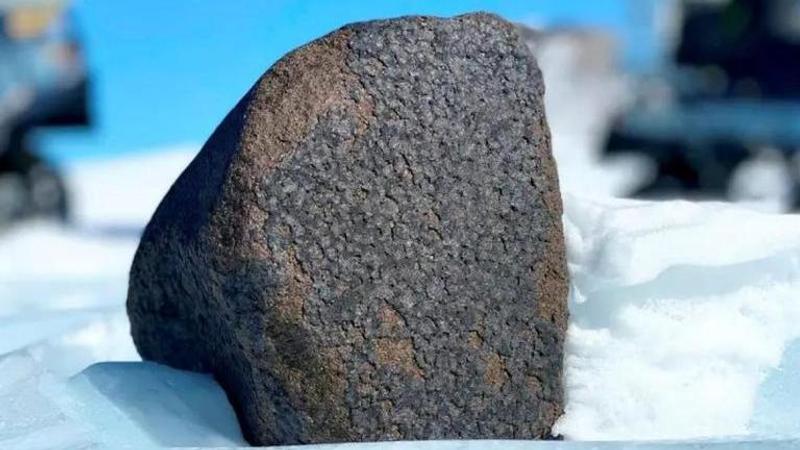Published 10:33 IST, January 30th 2023
'size of a gourd' rock containing material billions of years old discovered in Antarctica
The extraordinary rock is said to be one of the largest found in the continent, containing material from billions of years ago.

An extremely rare meteorite that contains some of the oldest material in the solar system, has been found by scientists in Antarctica.
What is said to be the 'size of a gourd,' the 17-pound meteorite was discovered on Janurary 5 by an international team at the end of an 11-day expedition.
“When we saw this one just sitting by itself in the middle of the blue ice, we all got so excited,” Chicago Field Museum researcher Maria Valdes told the Chicago Tribune.
The extraordinary rock is said to be one of the largest found in the continent, containing material from billions of years ago and is likely to be originated from the Main Asteroid Belt between Mars and Jupiter, The Independent reported.
Only 100 meteorites this big or larger have been recovered from Antarctica in the past century, according to Chicago's Field Museum, which participated in the trip. This puts the meteorite's magnitude into context.
According to The Tribune, researchers on snowmobiles had been scouring ice fields for meteorites for more than two weeks when they discovered the astounding discovery right before they were ready to call it a day.
Since they were aware that their discovery was the mother lode if a meteorite had been discovered, Valdes claimed they were initially hesitant to celebrate. The final hour of the last day.
When team members saw the object was "the size of a bowling ball but twice the weight of a bowling ball," Valdes told the newspaper, they became certain they had discovered a rare space rock.
The rock had a glassy exterior layer that somewhat melted as it hit the atmosphere, which Valdes referred to as having a "fusion crust." It had been on Earth for a very long time because of how worn down it was.
The Royal Belgian Institute of Natural Sciences in Belgium received the meteorite for chemical investigation.
According to Valdes, "all meteorites have something to tell about the development of Earth." When it comes to meteorites, size doesn't always matter, and even small micrometeorites may be immensely useful for science.
The majority of the 45,000 meteorites discovered in Antarctica during the previous century, according to The Independent, only weighted a few grams.
The discovery came after NASA successfully destroyed a 530-foot-wide asteroid in a test run months earlier to get ready for the possibility of a sizable space rock hurtling toward and endangering Earth, like the 6.2-mile-wide asteroid that researchers think wiped out the dinosaurs millions of years ago.
Updated 10:33 IST, January 30th 2023



